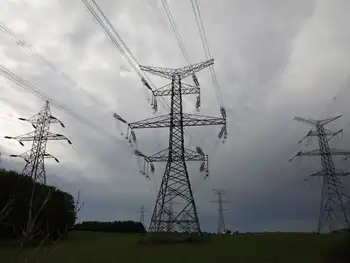Countdown to Copenhagen
Since November 12, Russia, South Korea and Brazil have all announced new targets for cutting CO2, leading to a significant improvement in hopes for the outcome of the Copenhagen climate summit, which is now only two weeks away – and which, it was announced recently, at least 65 world leaders will attend.
For the essence of the Copenhagen deal, which it is hoped will halt the progress of potentially-disastrous global warming, is that there should be emissions cuts promised by both sides, which in this case are the rich industrialized countries on the one hand, and the poorer developing countries on the other (although some of the developing nations, led by China, are now major carbon emitters themselves) – and this is exactly what has happened in the last few days.
Russia, a major developed economy, promised on November 18 to slash its emissions by 20 to 25 per cent on 1990 levels by 2020, nearly doubling its previous target.
South Korea, which is still classed as a developing country but is highly industrialized, promised on November 17 to cut its emissions to four per cent below 2005 levels by 2020 – which is the first absolute cut in emissions pledged by any developing nation, and an enormous step forward.
And Brazil announced on November 13 that it would seek to make a 36 to 39 per cent cut in its "business as usual" emissions growth by 2020 – which is not a binding target, but a very promising beginning.
These are very significant straws in the wind ahead of the summit in the Danish capital, indicating that nations on both sides of the world's wealth divide are coming round to the view that doing nothing is no longer an option for anyone.
The hope is, of course, that the leaders of the two camps, the United States and China, the world's biggest CO2 emitters, accounting between them for 40 per cent of the total, will make pledges of their own to cut carbon – otherwise no deal will be possible. So far, they have not.
Yet it is looking increasingly likely that the United States will after all put an emissions target on the table, resolving what we characterized here as President Barack Obama's lonely dilemma – can he act ahead of the Senate, where U.S. climate legislation is currently stalled?
Mr. Obama's climate envoy, Todd Stern, said that the administration recognized that America had to come forward with a target for cutting its emissions.
"What we are looking at is to see whether we could put down essentially a provisional number that would be contingent on our legislation," he said. "We are looking at that, there are people we need to consult with." It does not take much imagination to guess that the people to be consulted are U.S. senators, as without 60 of the Senate's 100 votes in its favour, the current climate bill could be filibustered, or talked out.
Adding to growing optimism about a possible deal is the fact that Mr Stern's comments come on top of Mr Obama's joint statement with the Chinese premier, Hu Jintao, after their meeting in Beijing last week, which said specifically that an accord should include emission-reduction targets for rich nations, and a declaration of action plans to ease greenhouse-gas emissions in developing countries.
If America leads, will China follow? That is the great unknown. Like all developing countries – apart from the new exception South Korea, as mentioned above – China does not yet have any targets for cutting its greenhouse gases and has long been resistant to the idea.
But it is coming to accept that it must move away from "business as usual". In September, Mr. Hu told the United Nations climate summit in New York that China was setting out to reduce the energy intensity of its economy – that is, the amount of energy needed to produce a unit of output – by "a notable margin".
What that margin might be, still remains wrapped in mystery, but without specific numbers – U.S. numbers and Chinese numbers – Copenhagen will fail.
Several of the rich countries have upped their ambition considerably in the course of the year, with Japan going furthest: the new administration of Yukio Hatoyama promised a 25 per cent CO2 cut on 1990 levels by 2020 almost as soon as it took office in September. With Russia and Australia also making new pledges, Canada is now the rich nation with the weakest climate ambition.
"These developments are welcome, but we now need to see really ambitious moves from the key players," said Keith Allott, head of climate change for WWF-UK. "Many people seem to have written Copenhagen off, but there is still all to play for."
The fact that so many world leaders have now agreed to go to Copenhagen increases the chances of success, senior British government sources believe. Although the Danes did not release the names of the 65 who will definitely attend, it is known that most European heads of state or government will be going, including Gordon Brown (the first to announce his intention to go, back in September), President Nicolas Sarkozy of France and Chancellor Angela Merkel of Germany, as well as Mr Hatoyama of Japan and President Luiz Inacio Lula da Silva of Brazil.
It is thought increasingly likely that Mr Obama will now fly to Copenhagen: the invitation from the Danish prime minister, lars Lokke Rasmussen, is for the last two days of the conference.
"Leaders will not want to go to Copenhagen and come away without an agreement, which would so obviously be their failure," a senior Whitehall source said.
"Having the leaders at Copenhagen doesn't guarantee success. But it makes it much harder for it to fail."
Who has pledged what?
China
China has a detailed climate-change action plan; it was the first developing country to adopt one, in 2007. The plan envisages a rapid expansion of renewable energy and a big improvement in energy efficiency, among other steps, but it does not include any specific binding target for cutting national CO2 emissions. However, China recognizes there will have to be some sort of figure on the table at Copenhagen, showing a move away from "business as usual". This may refer to the energy intensity of the economy, which Premier Hu has pledged to reduce.
United States
The U.S. will have to put a CO2 reduction target on the table at Copenhagen or there will be no deal. The figure is likely to emerge from the two climate bills in Congress, either a 14 per cent reduction on 2005 levels (the House bill) or a 20 per cent reduction on 2005 levels (the Senate bill), both to be implemented by 2020.
European Union
The 27-member states of the European Union have agreed to cut their total emissions by 20 per cent by 2020, whatever happens, and to increase this figure to 30 per cent by the same date if there is a Copenhagen deal.
United Kingdom
The UK is part of the EU agreement, but Britain's own individual pledge is to cut emissions by 34 per cent on 1990 levels by 2020. The idea of this being increased after a Copenhagen deal has not yet been agreed.
Russia
Russia anounced at the EU-Russia summit on November 19 that it would cut its emissions by 20-25 per cent on 1990 levels by 2020. Previous target was 10 to 15 per cent by that date.
India
India has a climate-change program, featuring a mass increase in solar power, but it has hitherto seemed a long way from setting any sort of numerical climate target.
Japan
New premier Yukio Hatoyama set an ambitious new climate target for Japan as soon as he took office in September - a 25 per cent reduction on 1990 levels by 2020, in a move which has been widely praised.
Canada
Canada has said it will cut CO2 by 20 per cent on 2006 levels, which is equivalent to a 3 per cent cut on 1990 levels, by 2020. This target has been criticized and is widely regarded as inadequate.
South Korea
South Korea set the first ever target by a developing country for an absolute reduction in emissions - minus 4 per cent in a 2005 baseline by 2020. The move has been warmly welcomed.
South Africa
No sign of any sort of numerical target as yet. South Africa has a "long-term mitigation scenario" which identifies a range of climate-friendly actions, such as increased energy efficiency.
Mexico
A year ago Mexico announced the first developing country target - 50 per cent on 2002 levels by 2050. During the interim it says it will reduce "business as usual" emissions growth by 20 per cent.
Australia
Australia says it will reduce its emissions by up to 24 per cent on 1990 levels by 2020, depending on what happens internationally. It will do a certain amount anyway, starting from 5 per cent.
Brazil
Brazil recently agreed it would make a cut in "business as usual" - that is, in the rate of growth of its CO2 emissions, of 36 to 39 per cent by 2020. Not an absolute cut but a big step forward.
Indonesia
Indonesia announced in the summer it would make a cut in "business as usual" emissions growth of 26 to 41 per cent by 2020, if the country has international support.
Norway
Norway has announced it will carry out a straight cut of its CO2 emissions of 40 per cent by 2020 on a 1990 baseline. This is the most ambitious climate target anywhere in the world.
Related News

IEA: Electricity investment surpasses oil and gas for the first time
LONDON - Investments in electricity surpassed those in oil and gas for the first time ever in 2016 on a spending splurge on renewable energy and power grids as the fall in crude prices led to deep cuts, the International Energy Agency (IEA) said.
Total energy investment fell for the second straight year by 12 per cent to US$1.7 trillion compared with 2015, the IEA said. Oil and gas investments plunged 26 per cent to US$650 billion, down by over a quarter in 2016, and electricity generation slipped 5 per cent.
"This decline (in energy investment) is attributed to two…




